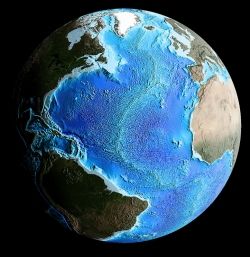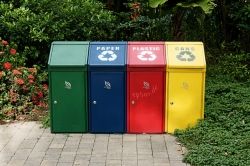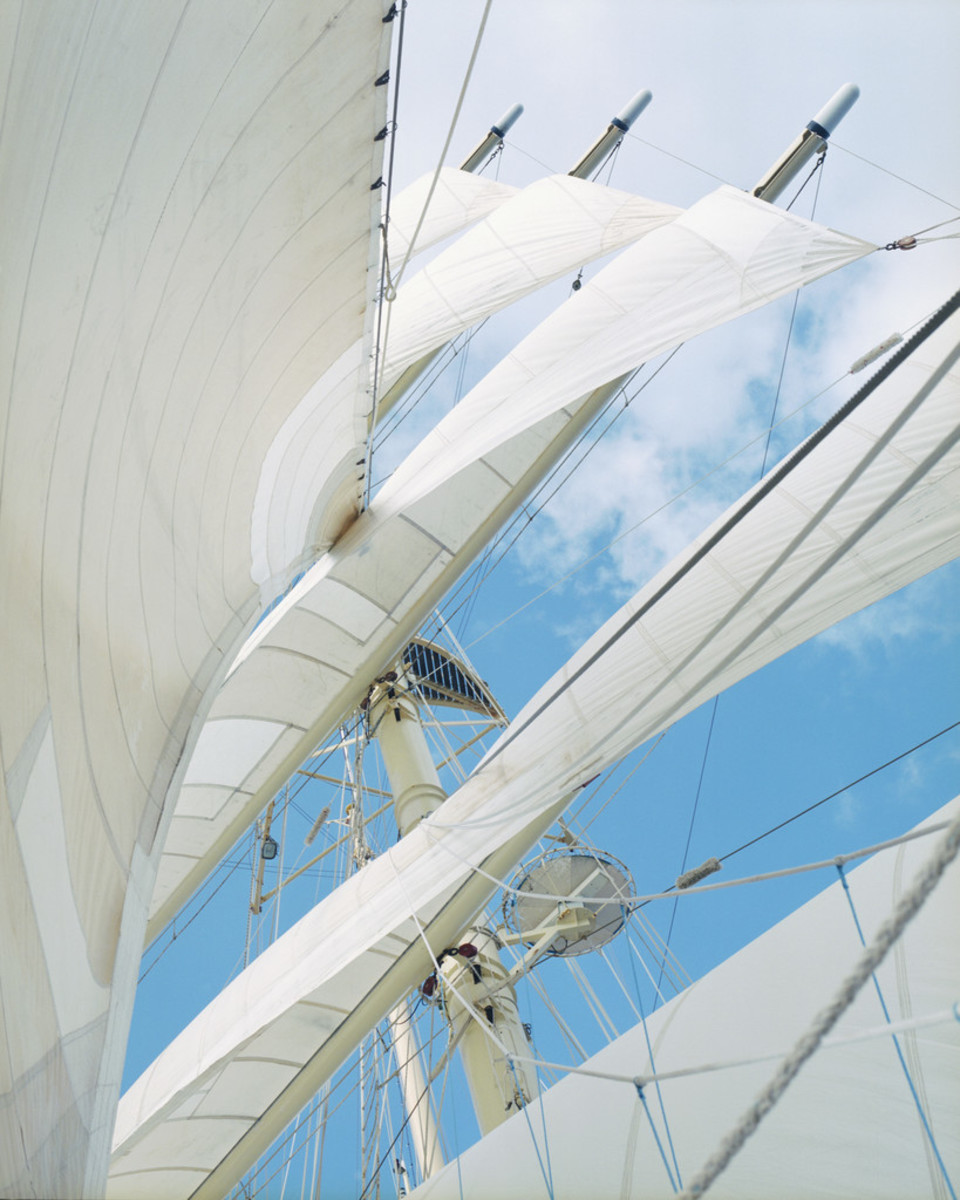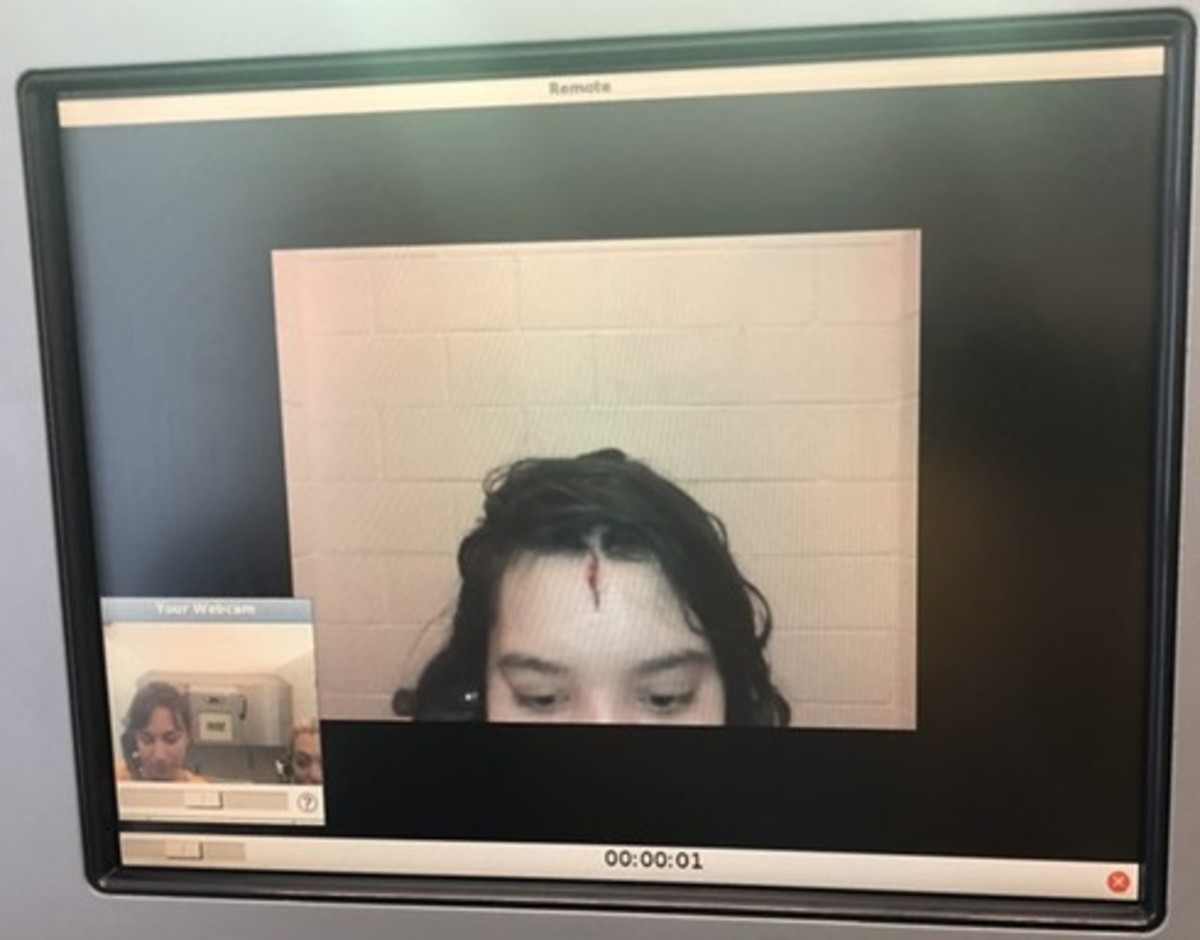Earth Day: One Planet

Our Communal Responsibility
One Planet.
This is the mantra we need to live by. We only have one planet and it is our responsibility to take care of it. This is what Earth Day is all about: reminding us that we cannot ignore the environmental problems that plague our planet, but that instead we must do our part to right the wrongs and keep our planet healthy.
It is far too easy to shrug off the problem and pretend that we are powerless to help or that the situation is not as critical as the media make it out to be. However, the reality is that the issues the media shows are very real. While we as individuals certainly do not have the power that governments or major corporations have to change things, we are far from powerless. It is vital for the future of our planet that we all make an effort to help the environment.
Images by author unless otherwise credited.
Image by Tony Netone used under Creative Commons License.

History of Earth Day
A look back at the beginning
In the 1960s, concern about the environment was minimal. While Silent Spring by Rachel Carson had begun to raise awareness of the issues at hand, public media attention was minimal. In the United States, the decade was fraught with turbulence and saw extensive protests from the new generation of college students. Earth Day founder Gaylord Nelson capitalized on the energy behind students’ anti-war protests to raise awareness for the environment. Together with a dedicated team, he organized the first Earth Day on April 22, 1970. Millions of Americans participated in rallies and organized protests. It was the first unified fight for the planet.
In 1990, Earth Day became a global event. 200 million people in 141 countries participated making the day a massive success and furthering the environmental movement. The day was thanks to Denis Hayes, the national co-ordinator of the first Earth Day. As the new millennium dawned, the movement grew even further with Earth Day 2000. This time the focus on was clean energy. 184 countries and 5000 environmental groups participated. World governments could not ignore the message: the people of Earth wanted change.
Image by Kevin M. Gill used under Creative Commons License.
Celebrating Over 40 Years - Some more Earth Day history
This video is both informative and entertaining as it shares highlights from each year of Earth Day's history.
A beautiful example of nature


Simple Things You Can Do to Help the Environment
It's the everyday efforts
Recycle: This might seem obvious, but it's surprising how often people ignore it. I cannot count how many times I have seen recyclable materials in the trash, despite a recycling bin right next to it. It takes little effort to give your containers a quick rinse and place them in the blue bin. Many cities have limits of how many garbage bags houses are allowed to have each week, encouraging people to recycle as much as possible. Spend the small amount of time it takes to recycle everything your city will accept.
Use Cloth Shopping Bags: This is so simple it's impossible to find an excuse NOT to do it. Many stores now charge for plastic bags, so the one time cost of a cloth bag is quickly nullified. They fit loads of groceries and are much more durable than paper or plastic, so will not break from the weight of heavy loads. I have had mine for 2.5 years and have yet to wear one out, despite constant use. If you haven't already switched to reusable cloth shopping bags, what are you waiting for? Some studies have shown bacteria grow in cloth bags (this hapens because of spills from goceries); given this information, you could choose to wash your cloth bags periodically to keep them sanitary. Also, some cities allow for plastic bags to be recycled, making the use of plastic grocery bags less harmful.
Use Tupperware or glass: Using plastic baggies for lunches might be convenient, but it is very wasteful. Each time you throw one away, you are contributing to the landfills and you are using more of Earth's precious resources. Tupperware (or other plastic containers) or glass containers can be reused hundreds of times and have only a one time cost. As an added bonus, they also protect your food (who wants a squished sandwich??). Glass can be especially good since they do not use any plastic; however, if you have young children, you might want to stick to plastic containers until they're older.
Water usage: How many of us waste water? I know I am sometimes guilty of taking that extra long shower or being to lazy to get up and move the lawn sprinkler. Sometimes, these things just happen. However, they add up and cause a drain on our planet's water supply. It's important that we all make an effort to reduce our water usage. Every little bit helps.
Heat and Air Conditioning: These appliances are essential on the most extreme winter and summer days. Sometimes, though, we abuse them. Turn your heat down a degree or two in the winter and put on a warmer sweater or cuddle up with a blanket. In the summer, set your air conditioner a couple of degrees warmer. The point of air conditioning is not to be cold, but to be comfortable. I often find myself putting on a sweater at other people's houses just to stay warm despite the heat outside. Save yourself some money and save our resources at the same time.
Turn off the Lights: This one is simple-when you leave a room and don't plan to go back, turn off the light. It seems obvious, but it's something many of us don't think of when it comes to communal rooms such as the kitchen or living room. It's also good to think of for hall lights.
Walk: When your destination is close enough, walk! Of course, this only works in certain situations and environments, but most of us can do this more often than we care to admit. If you are picking up milk from the corner store and it's only a couple of blocks away, walk over instead of driving. The same goes for when you're visiting friends who live in your neighbourhood. Certainly when the weather is awful we can make the exception and drive, but otherwise, grab a pair of sneakers and start trekking!
Compost: If you live somewhere that this is possible, setup a compost site. There are so many organic items that end up in landfills when they could instead decompose and return to Mother Earth. Kids can have a lot of fun with this, so if you have children or grandchildren, have them help you set it up. It's a great bonding experience and will help teach them to respect the environment. Composting is also a great option for schools. One class can take responsibility for it or classes can take turns.
Image by epSos used under Creative Commons License.
Disney and Earth Day - An inspiration
Disney has released numerous Earth Day videos. They donate the profits from the first week of ticket sales to Earth related causes. This video shows clips from the videos and discusses Disney's efforts to help our planet.

Bigger Commitments You Can Make
A sacrifice for Mother Earth
Choose a fuel efficient car: The next time you need to buy a car, choose one that is fuel efficient. Too many people want the big SUV or fast sports car. Any vehicle that is a gas guzzler is hurting our environment. I certainly don't expect everyone to buy a Smart car (I don't have one), but there are many fuel efficient cars that are mainstream. (The Honda Civic and Ford Focus are two that come to mind.) This can also save you a ton of money.
Refrain from using fuel run toys: What I mean by this is try to not use motorboats, jet skis, etc. for R&R. These can be a lot of fun, but they use a lot of fuel, which both depletes our resources and pollutes our waters. There are many other water activities to try: canoeing, kayaking, and good old fashioned swimming. These are not only better for our planet, but they are great exercise! Cruise boats are another luxury that our environment cannot afford for much longer.
Image by U.S. Geological Survey used under the Creative Commons License.
An Inconvenient Truth - A must see film
If you've already seen Al Gore's famous film, then you know it lives up to the hype. When it first came out, I wasn't sure it was worth all the media attention, but once I watched it I realized how impressive it was. It's a bit depressing, but it's an important film because it's all true. Gore explores the reasons for Earth's climate change and what we need to do to stop it.
The Earth Day Network
Committed to helping the planet
The Earth Day Network operates in 192 countries worldwide and has over 22,000 partners. The Network helps to promote green activities and policies. One of their major contributions is in making schools greener. They hope to make all elementary and high schools in the United States green within one generation. This includes instilling a sense of environmental responsibility in students so that they can continue to help the planet. The Earth Day Network is also active in matters such as environmental campaigns and animal protection, including saving the whales.
Another reason to save the planet


Earth Hour
A vital movement
On March 31, 2007, Sydney, Australia held the first annual Earth Hour. For one hour, businesses and homes were asked to turn off all non-essential lights. The event was designed to promote awareness of climate change and our responsibility to do something about it.
Planning for this first Earth Hour, which was originally to be called “The First Flick,” began in 2004 by the World Wide Fund for Nature. The three years of hard work paid off as the event was a huge success. In October 2007, San Francisco tried their own “Lights Out” program. When it, too, proved popular, the city decided to join with Sydney for their planned March 2008 Earth Hour.
The success of Earth Hour became obvious when, on the first anniversary in March 2008, 35 countries and 400 cities participated. The Sydney Opera House, Colosseum, Empire State Building, Golden Gate Bridge, CN Tower, and a multitude of other famous landmarks went dark.
In 2009, the event expanded once again with 88 countries and 4159 cities involved. In Canada, Ontario had a 6% decrease in electricity usage and Toronto had a decrease of 15.1% during Earth Hour. The Philippines reported that they saved 611MWh of electricity, which equates to a dozen coal power plants being shut down for the hour. Of course we can’t always keep all our lights off at night, but these statistics show how much of a difference we can make by turning off the lights we don’t need.
Earth Hour continues to grow. In 2010 126 countries took part. 2011 saw 135 countries and 5251 cities going dark while 2012 had 152 countries and over 7000 cities participate. In 2013, Uganda expanded the movement by introducing Earth Hour Forest in an campaign to stop deforestation.
Image by Aussiegall

My Earth Hour 2012
The perils of a tourist
I love Earth Hour because there are so many unnecessary lights. However, it does have a slight drawback if you’re a tourist. I was in Sydney during Earth Hour 2012. To be honest, the event hadn't even crossed my mind since I was so caught up in my trip. My friend and her roommate took me out for dinner downtown and afterwards we walked to the harbour. This was the first time I’d gotten to see the Opera House and the Harbour Bridge up close (and the only time I had the chance to see them at night). Unfortunately, it was Earth Hour and they were completely dark! Alas, it was a case of very bad timing!
Image belongs to author's friend.
How much do you help the environment by recyling, conserving, etc.?

Think of the Future
It's our planet
Remember, we only have one planet. It's our responsibility to protect it, both for ourselves and for future generations. Every little thing we can do to help is important. If we all pitch in, we can make a better future for Earth and everyone and everything living on it.









